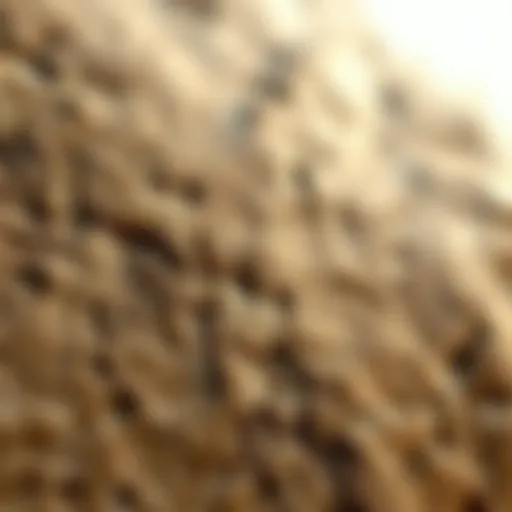Megalodon Tooth Pricing Insights for Collectors
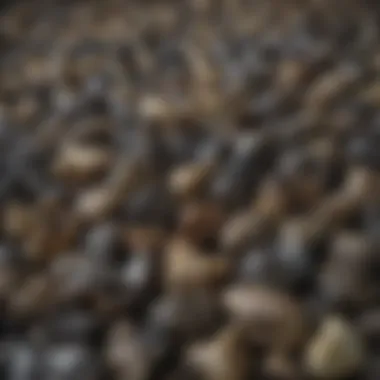

Intro
Megalodon teeth have captivated collectors and enthusiasts alike, serving not only as remarkable natural artifacts but also as valuable collectibles. Understanding the market for these extraordinary fossils requires a deep dive into their history, origins, and the factors that influence their pricing. This article aims to provide a comprehensive analysis of megalodon tooth pricing, offering insights that can aid both buyers and sellers in navigating this niche market.
History and Origins
Overview of Collectibles, Rocks, and Fossils
The collectible market encompasses a vast array of items, with fossils holding a unique position due to their connection to Earth’s distant past. Fossils, including megalodon teeth, are remnants of prehistoric life that provide not just aesthetic value but also scientific interest. Collectors often pursue these artifacts for their historical significance, beauty, and rarity.
Megalodon teeth, specifically, date back approximately 23 to 3.6 million years ago. This ancient shark, known as Carcharocles megalodon, was the largest predator of its time. The teeth are among the most sought-after fossils due to their impressive size and formidable appearance. Ranging from a few inches to over seven inches long, megalodon teeth serve as tangible links to a world long gone.
Historical Significance and Cultural Impact
Throughout history, megalodon teeth have been esteemed in various cultures. In some societies, they were believed to hold mystical powers, while in others, they were used as tools or jewelry. Their discovery often evokes a sense of wonder, leading to a growing interest in paleontology and the study of ancient marine life.
In modern times, the cultural impact of megalodon teeth has surged, particularly in the context of the collectibles market. Many individuals view these fossils as investments as well as pieces of art. The increasing popularity is reflected in the constant demand, driving attention to their pricing.
"Megalodon teeth are not only valuable fossils; they are emblematic of an ancient ecosystem that has fascinated humans for centuries."
Identification and Classification
Guide to Identifying Rocks and Fossils
Successfully identifying megalodon teeth involves a keen understanding of various characteristics. Collectors should pay attention to size, shape, color, and condition. Authentic megalodon teeth typically possess a distinctive triangular shape with serrated edges, an essential feature of this species. Additionally, coloration can vary from dark brown to black, often with enamel shine.
It is crucial to differentiate between genuine megalodon teeth and replicas or other shark teeth. Indicators of authenticity include natural wear patterns and the weight associated with fossilization. Collectors may benefit from consulting expert resources or experienced collectors when evaluating potential purchases.
Common Types and Variations
Megalodon teeth are classified into several categories based on specific characteristics:
- Anterior Teeth: These are the front teeth and usually larger and more robust.
- Lateral Teeth: Found on the sides, these have a more elongated shape.
- Posterior Teeth: Representing the back teeth, these are often smaller and less recognizable.
Variations in size and condition can significantly impact value. Teeth in excellent condition, with limited wear, can command higher prices compared to those with heavy abrasion or damage. Provenance, or the recorded history of a tooth's ownership, plays a vital role in assessing both authenticity and market value.
Understanding the characteristics and variations of megalodon teeth is essential as one navigates the market to make informed decisions. This knowledge enhances the experience of collecting and contributes to a deeper appreciation of these remnants of prehistoric life.
Understanding Megalodon Teeth
Understanding megalodon teeth is essential for anyone interested in the collection of fossils. These teeth represent not just the remains of a formidable prehistoric predator, but they also serve as valuable artifacts in the world of paleontology. By gaining insight into what constitutes a megalodon tooth, collectors can better appreciate their value and significance. This knowledge plays a vital role in making informed decisions when purchasing or selling these teeth, as well as when assessing their authenticity and overall condition.
Megalodon teeth are more than mere curiosities; they are relics of a bygone era. Their uniqueness stems not only from their size but also from the rich geological history they embody. Understanding their characteristics can enhance the overall experience of fossil collecting and underscore the importance of ethical acquisition practices.
What is a Megalodon Tooth?
Megalodon teeth are the fossilized remains of the megalodon, a species of shark that existed approximately 23 to 3.6 million years ago. These teeth can vary greatly in size, with some reaching lengths of up to seven inches. The structure of these teeth is distinctive; they are triangular with serrated edges, adapted for gripping and slicing through flesh.
The color of megalodon teeth can range from black to gray, often influenced by the mineral content of the sediment in which they were embedded.
Collectors find megalodon teeth fascinating not only for their size but also for the connection they provide to the ancient marine ecosystems.
Historical Context
The historical context of megalodon teeth stretches back millions of years. This species ruled the oceans and is believed to have played a significant role in the marine food chain. The extinction of the megalodon approximately 3.6 million years ago marked the end of an era, leading to the emergence of modern shark species.
Fossils of the megalodon, including their teeth, have been discovered on every continent except Antarctica, showcasing their wide-ranging habitat. The study of these teeth provides insight into the evolutionary biology of sharks and the environmental conditions of prehistoric oceans.
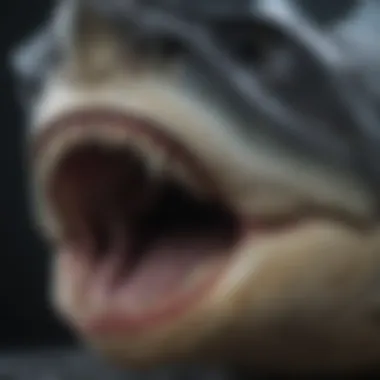

Today, megalodon teeth are highly sought after by collectors. Their rarity and historical value contribute to their status as prized collectible items. Understanding the historical significance aids collectors in acknowledging the importance of preservation and responsible collecting practices.
Factors Influencing Megalodon Tooth Prices
Understanding the elements that shape the prices of megalodon teeth is essential for collectors and enthusiasts alike. Several factors come into play when determining these prices. Knowing them not only aids in making informed purchasing decisions but also helps sellers gauge the market effectively.
Size and Dimensions
Size is one of the most significant factors affecting the price of megalodon teeth. Larger specimens usually command higher prices due to their rarity. While teeth can range from a few inches to over seven inches long, the demand for larger teeth is consistently higher. For collectors, the appeal of a large tooth lies in its visual impact and the impressive scale it represents.
The dimensions of the tooth also include its width and thickness, which can indicate its overall health and maturity. Teeth that showcase good size specifications are often on the wish list of many collectors. Prospective buyers should meticulously measure the teeth they consider for purchase, as size can directly correlate with pricing levels.
Condition and Quality
The condition of a megalodon tooth plays a crucial role in its valuation. Factors such as chips, cracks, and discoloration can substantially reduce its price. Ideal specimens showcase intact enamel and vibrant coloration, which often reflect a tooth's excellent preservation status.
Quality is assessed through several criteria:
- Polish and Luster: A well-polished tooth shines and reflects light, enhancing its visual appeal.
- Surface Integrity: Examination for any signs of wear or damage must be thorough.
In essence, the market prefers teeth that are in prime condition, as they not only look better but also hold their value over time. Collectors should prioritize quality over quantity when building their collection.
Provenance and Authenticity
Provenance aids collectors in understanding a tooth's history and significance. If a tooth has a well-documented history, it tends to be more valuable. Buyers appreciate knowing the place of origin, as certain locations yield teeth that are more sought after. Authenticity is equally critical; the market has seen a rise in replicas and forgeries.
When purchasing a megalodon tooth, confirm its authenticity and gather any related documentation. Provenance details can sometimes be the deciding factor in a sale, so it is wise to ask sellers to provide provenance when possible.
Market Demand
Market demand fluctuates and can considerably affect megalodon tooth pricing. The popularity of fossils has spurred increased interest, especially in educational settings and among casual collectors. Events like fossil fairs, shows, and conventions often reignite public fascination, which in turn elevates demand.
Observing current trends is essential. Here are a few points to watch:
- Social Media Influence: Platforms like Reddit and Facebook can drive interest as collectors share their finds and stories.
- Economic Factors: General economic conditions can also affect disposable income levels for purchasing collectibles.
Staying informed about market dynamics helps collectors predict when to buy or sell effectively. This vigilance can make a significant difference in one's overall investment in megalodon teeth.
Price Ranges for Megalodon Teeth
Understanding the price ranges for megalodon teeth is crucial for collectors and enthusiasts alike. This segment elucidates the valuation process of these fossils, providing insights that can influence buying and selling decisions. The prices vary significantly based on multiple factors, including size, quality, and historical context. Knowing these ranges helps collectors prioritize their investments, ensuring they acquire pieces that align with their interests and budget.
Small Teeth Pricing
Small megalodon teeth, typically measuring under two inches, fetch a lower price range. These teeth can be found in prices ranging from $20 to $100. Factors contributing to this pricing include the overall condition of the tooth and the presence of any unique characteristics. Collectors often seek small teeth as affordable entry points into the world of megalodon fossils, appreciating their historical significance even if they lack the size of larger specimens.
Medium Teeth Pricing
Medium-sized teeth, which measure between two to four inches, are usually more sought after. Their price can range between $100 and $500. The appeal of medium teeth lies in their balance of size and affordability. Collectors may prefer these specimens for display purposes, as they often feature intricate details. Factors such as the quality of enamel and any signs of wear can significantly impact the price within this range.
Large Teeth Pricing
Large megalodon teeth, exceeding four inches, are the hallmark for many collectors. Their pricing can reach anywhere from $500 to several thousand dollars, depending on various elements such as provenance and market demand. The rarity of quality large teeth makes them highly desirable, often leading to competitive bidding in auctions. Collectors are willing to invest considerably if the tooth has impeccable condition or an interesting backstory, which adds to its overall value.
Exceptional Finds Pricing
Exceptional finds, which include teeth that are either remarkably large or are in pristine condition, command premium prices that can soar well beyond $10,000. Identifying an exceptional piece involves careful examination and often professional appraisal. These teeth stand out not only for their size but also for their history and condition. Market demand for such rarities can fluctuate, but their investment potential remains high among serious collectors. An often-cited quote in the collecting community is:
"The thrill of finding a rare megalodon tooth can be surpassed only by acquiring one of unmatched quality and history."
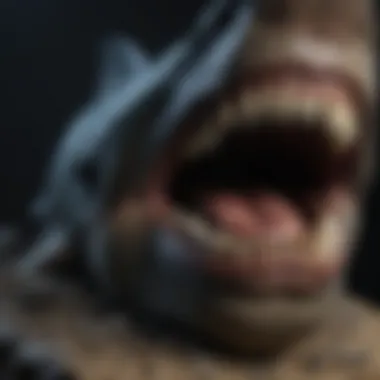

In summary, understanding the price ranges for megalodon teeth helps collectors make informed decisions. Whether seeking small, medium, large, or exceptional finds, each category offers unique opportunities. With careful consideration of the factors influencing these prices, collectors can find the perfect specimens to enhance their collections.
Buying Megalodon Teeth
Understanding the process of buying megalodon teeth is crucial for collectors and enthusiasts. This section will explore important considerations, how to navigate the market, and what to prioritize during your purchase. Knowing where to find teeth, how to identify trustworthy sellers, and deciding between online marketplaces and physical stores will help ensure a valuable addition to your collection.
Where to Purchase
Megalodon teeth can be found in various places, both online and offline. Common purchasing options include:
- Specialty Fossil Shops: Often carry a selection of authentic megalodon teeth. These shops usually have knowledgeable staff who can provide information about the teeth’s origin and quality.
- Dinosaur and Fossil Shows: Events often feature multiple vendors and you can examine the teeth in person before making a purchase.
- Online Marketplaces: Websites such as eBay and Etsy list a wide range of megalodon teeth. However, buyers should exercise caution when purchasing online.
Before making a decision, always research the place of purchase for its reputation and reviews from other buyers.
Identifying Reputable Sellers
Finding a trustworthy seller is vital in the megalodon tooth market. Here are factors to consider:
- Reviews: Check online reviews on platforms. A history of positive feedback often indicates reliability.
- Certifications: Some sellers provide certificates of authenticity. Ensure these documents come from recognized institutions.
- Return Policies: Reputable sellers offer clear return policies. This provides assurance if the item does not meet expectations.
Connecting with other collectors through forums like Reddit or Facebook groups can also lead you to reputable sellers. They can share their experiences and recommendations.
Online Marketplaces vs. Physical Stores
Both online and physical purchases have their pros and cons:
- Online Marketplaces:
- Physical Stores:
- Pros: Wider selection and often competitive pricing.
- Cons: Risk of counterfeit items and lack of direct contact with sellers.
- Pros: Ability to inspect the item in person. Face-to-face interaction provides an opportunity to ask questions directly.
- Cons: Limited stock and may involve higher prices due to overhead costs.
Ultimately, the choice between online and physical stores depends on personal preferences and ensuring the authenticity of the tooth.
"Always keep in mind that knowledge is power when dealing in fossil transactions. Take your time to research."
This comprehensive approach to buying megalodon teeth will guide potential buyers, helping refine their collection while avoiding common pitfalls.
Selling Megalodon Teeth
Selling megalodon teeth is a crucial aspect of the collectibles market. This section sheds light on why understanding the selling process can benefit both new and seasoned collectors. Knowledge of how to sell such unique fossils is essential for maximizing financial returns. Collectors often acquire megalodon teeth not only for passion but also as investment pieces. Thus, understanding the selling landscape can lead to informed decisions and profitable outcomes.
Additionally, the market for megalodon teeth has grown significantly over the past few years. This growth presents opportunities for sellers to command better prices, especially when dealing with rare specimens. Sellers must navigate various selling platforms and practices that can affect their earning potential.
Platforms for Selling
Today, several platforms exist for selling megalodon teeth. Each platform has its strengths and weaknesses, depending on your target audience and the specific teeth you wish to sell. Common platforms include:
- Online marketplaces: Websites like eBay and Etsy allow sellers to reach a vast audience. Listing teeth online can attract collectors worldwide, but sellers must be cautious of lowball offers.
- Specialty fossil shops: Certain shops focus exclusively on fossils and rare collectibles. Selling through these stores may provide a more targeted audience, combining knowledgeable buyers with potentially lower exposure than online marketplaces.
- Social media platforms: Platforms like Facebook and Instagram provide innovative ways to showcase teeth. Group pages related to fossils can be very profitable, enabling direct contact with interested buyers.
- Fossil fairs and expos: Attending events allows for in-person sales. Sellers can interact with buyers and appreciate firsthand the interest in their specimens. Engaging at these events can lead to better negotiation and customer relationships.
Tips for Maximizing Value
To ensure the highest possible return when selling megalodon teeth, consider the following tips:
- Accurate Assessment: Understand the specific details of your teeth. Buyers appreciate well-documented fossils, with accurate sizing, condition descriptions, and provenance details.
- High-Quality Photography: Use clear and well-lit images that showcase the teeth's features. Close-ups of unique characteristics can help attract buyers' attention.
- Research Pricing: Familiarize yourself with current market prices for similar teeth. This knowledge will empower you during negotiation.
- Provide Authenticity Proof: Buyers value authenticity. Offering certificates of appraisal from recognized organizations can enhance trust.
- Build a Reputation: Engaging positively with potential buyers on platforms can establish your reputation as a credible seller. Cultivating relationships in the community can lead to repeat business.
"Understanding how to sell is as crucial as knowing how to buy. Sellers must navigate the markets wisely to ensure they receive fair compensation for their valuable specimens."
Mastering these strategies will not only assist in a single sale but can lead to long-term success in the megalodon teeth market.
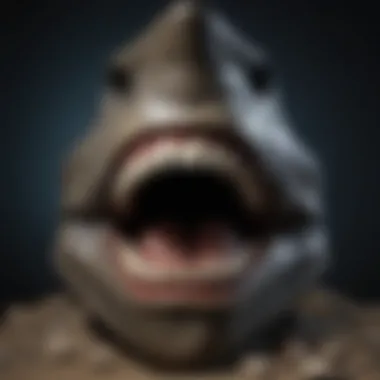

Market Trends and Predictions
Understanding market trends and predictions is crucial for collectors of megalodon teeth. This section aims to provide an in-depth look at the current market while offering insights into future projections. Recognizing trends helps enthusiasts make informed decisions, whether buying or selling.
Current Market Analysis
The current market for megalodon teeth reveals a dynamic landscape. Prices fluctuate based on varying factors such as demand, quality, and availability. Recent trends indicate a growing interest in paleontological items, contributing to an uptick in prices and availability. The rise of online marketplaces has broadened access to buyers, affecting price points positively.
Key elements of the current market include:
- Price increases: The prices of quality megalodon teeth range from hundreds to thousands of dollars, reflecting their rarity and desirability.
- Collector pools: There has been an influx of new collectors, driven by social media exposure and educational resources.
- Cultural relevance: Megalodon teeth are increasingly featured in popular media, raising public interest and ultimately, market demand.
"As interest grows, so does the need for clear understanding of the market. This is essential for both new and seasoned collectors."
In sum, the current market for megalodon teeth is vibrant and thriving, yet it demands careful consideration and awareness from collectors. Staying updated on market changes is essential for maximizing investment potential.
Future Trends
Looking ahead, the megalodon tooth market is expected to evolve significantly. Future trends suggest several possible directions:
- Digital marketplaces: The continual growth of online platforms will likely redefine how collectors acquire and sell their specimens. Enhanced analytics might lead to more transparent pricing.
- Sustainability concerns: As environmental awareness rises, buyers may start valuing sustainably sourced specimens, influencing price and demand patterns.
- Educational shifts: Increased educational initiatives could lead to a rise in serious collectors, thereby stabilizing prices in the long-term.
Market predictions show that prices may continue to experience volatility, impacted by economic conditions and collector trends. Being aware of both current and anticipated shifts can greatly benefit collectors. Keeping an eye on local and global economic factors can provide context to market fluctuations.
Caring for Megalodon Teeth
Caring for megalodon teeth is not merely a matter of aesthetic concern; it directly impacts the longevity and value of these unique fossils. Proper care enhances their preservation, ensuring they remain in pristine condition for collectors and enthusiasts alike. When megalodon teeth are cared for correctly, they can not only retain their structural integrity but also their market value. This section will discuss the essential elements of cleaning and maintenance, as well as tips for effectively displaying your collection.
Cleaning and Maintenance
Cleaning megalodon teeth requires an understanding of both the material and the appropriate methods to use. Unlike typical objects, these fossils demand a gentle touch. A few important considerations include:
- Use Soft Brushes: Employ a soft-bristle toothbrush or a paintbrush for general cleaning. Avoid anything abrasive that could scratch the surface.
- Mild Cleaning Solutions: For stubborn dirt or fossilized residue, a mix of warm water with a few drops of dish soap can be effective. Soak the teeth for a short period and gently brush.
- Rinsing Thoroughly: After cleaning, rinse the teeth well to ensure no soap remains, as leftover residue can lead to discoloration over time.
- Drying: It is critical to air-dry the teeth at room temperature. Do not use heat sources, as rapid drying may cause cracking.
- Conditioning: Some collectors apply a light mineral oil to enhance the luster of the teeth. This should be done sparingly to avoid any buildup.
Proper cleaning and maintenance significantly extend the life of megalodon teeth, preserving both their aesthetic and monetary value.
Displaying Your Collection
Displaying megalodon teeth involves more than mere aesthetics; it’s an opportunity to communicate the value and history of your collection. A few key points to consider include:
- Display Cases: Invest in UV-protective display cases to prevent light damage. This can help maintain color and prevent degradation.
- Avoid Direct Sunlight: Prolonged exposure to sunlight can fade the teeth. Place displays in shaded areas to mitigate this risk.
- Secure Mounts: Use mounts or stands that support the teeth without excessive pressure. This prevents any stress on the structure and maintains the tooth's integrity.
- Informative Labels: Adding labels that detail the origin and significance of specific teeth can enhance educational value for viewers.
- Climate Control: Maintain consistent temperature and humidity levels in the display area to prevent environmental damage.
Taking these steps can make your collection not just visually appealing, but also safeguarded against potential damage. Careful attention to the cleaning and displaying of megalodon teeth adds an extra layer of professionalism to your collection, benefitting both personal enjoyment and investment value.
Resources for Verification and Appraisal
Understanding the value of megalodon teeth requires careful consideration of verification and appraisal resources. This aspect is crucial for collectors, as it helps ensure they are investing in authentic and valuable pieces. Proper evaluation can mean the difference between a worthwhile acquisition and a poorly made purchase.
Professional Appraisers
Professional appraisers play a significant role in the realm of megalodon teeth valuation. Their expertise allows for a nuanced assessment of a tooth's value based on various factors. Evaluators check for characteristics like size, wear, and potential repairs. Many collectors turn to these professionals, particularly when they are unsure about a specific tooth's provenance or market position.
When choosing a professional appraiser, it is important to look for credentials. Appraisers often have affiliations with recognized institutions or organizations, which can signal their credibility. It is also beneficial to engage someone with specific knowledge of fossil teeth, as they can provide insights beyond general appraisal. Generally, collectors should expect to pay a fee for these services, typically based on the time taken or a percentage of the appraised value. Still, the investment is often justified through ensuring the authenticity and value of the teeth.
Certification Bodies
Certification bodies offer essential services for the validation of megalodon teeth. These organizations provide recognized authentication that can enhance the credibility of a sale or collection. A certificate often states the origin, age, and authenticity of the specimen. For buyers, this assurance can be crucial in building confidence in a purchase.
Several certification bodies exist, each with a unique focus or area of expertise. Collectors should seek those specifically related to fossils and paleontological items, as their assessments are generally more informed and valuable in the marketplace.
Engaging with these certification bodies can also have long-term benefits. A well-documented collection with verified pieces can lead to greater resale value. Moreover, it can attract a more discerning clientele, interested not just in the aesthetic value of a tooth but also in its background and integrity.
Engaging with professional appraisers and certification bodies is not merely a precaution; it is a smart strategy for any serious collector.
In summary, the resources for verification and appraisal are key to ensuring a successful experience in collecting megalodon teeth. The combination of professional appraisals and certifications offers substantial assurance regarding authenticity and value, thereby helping collectors to navigate the complexities of this unique market.

